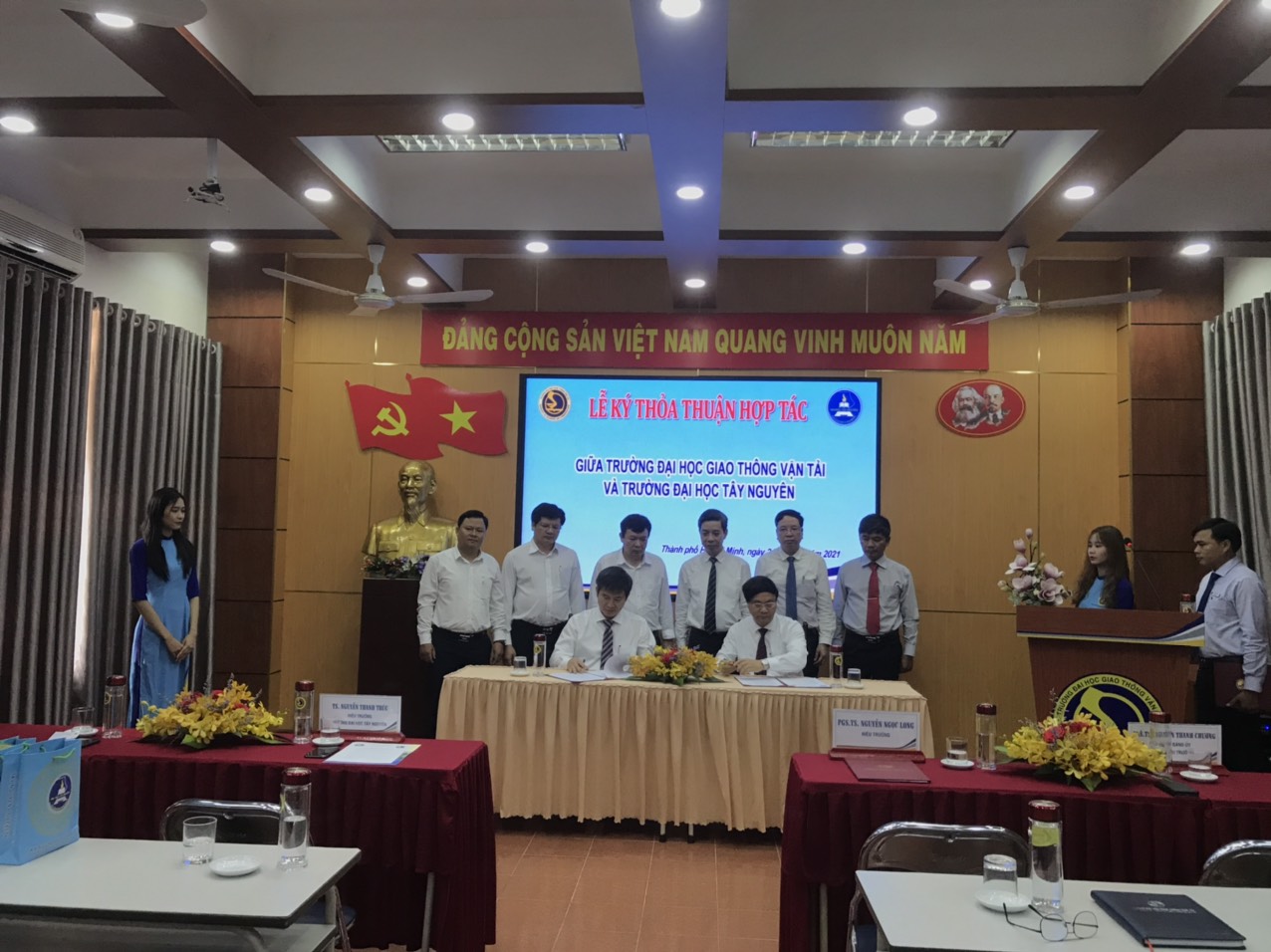TRANG THÔNG TIN LUẬN ÁN TIẾN SĨ
Tên đề tài: Nghiên cứu quản lý khai thác thiết bị xếp dỡ, cơ giới được đầu tư xây dựng tại các cảng biển container ở Việt Nam.
Ngành: Quản lý xây dựng Mã số: 9.58.03.02
Nghiên cứu sinh: Phạm Huy Tùng
Khóa: 2021-2025
Người hướng dẫn khoa học: PGS.TS. Nguyễn Lương Hải
Cơ sở đào tạo: Trường Đại học Giao thông vận tải.
NHỮNG ĐÓNG GÓP MỚI CỦA LUẬN ÁN
Kết quả nghiên cứu đã xây dựng được các mô hình chỉ tiêu đánh giá hoạt động QLKT và hiệu suất khai thác của TBXDCG tại các dự án ĐTXD; hiệu suất hoạt động của CB container vận dụng phù hợp với thực tiễn tại Việt Nam, trong đó:
- Mô hình 32 chỉ tiêu mô tả 4 nhóm hành vi quản lý áp dụng trong hoạt động QLKT TBXDCG tại các dự án ĐTXD CB container ở Việt Nam trên cơ sở vận dụng các nguyên tắc chung về quản lý, lý thuyết hành vi tổ chức và thực tiễn về QLKT TBXDCG tại CB container ở Việt Nam, trong đó: 8 chỉ tiêu mô tả nhóm hành vi lập kế hoạch khai thác, 8 chỉ tiêu mô tả nhóm hành vi tổ chức thực hiện kế hoạch khai thác, 6 chỉ tiêu mô tả nhóm hành vi điều hành thực hiện kế hoạch khai thác, 10 chỉ tiêu mô tả nhóm hành vi kiểm soát thực hiện kế hoạch khai thác TBXDCG tại các CB container;
- Mô hình 12 chỉ tiêu đánh giá hiệu suất khai thác TBXDCG theo các chỉ số Hiệu suất thiết bị toàn phần OEE đối với 4 nhóm TBXDCG (cẩu bờ, cẩu bãi, xe nâng, xe đầu kéo), bao gồm: 3 chỉ tiêu mô tả thành phần Hiệu suất thiết bị toàn phần OEE đối với cẩu bờ, 3 chỉ tiêu mô tả thành phần Hiệu suất thiết bị toàn phần OEE đối với cẩu bãi, 3 chỉ tiêu mô tả thành phần Hiệu suất thiết bị toàn phần OEE đối với xe nâng và 3 chỉ tiêu mô tả thành phần Hiệu suất thiết bị toàn phần OEE đối với xe đầu kéo;
- Mô hình 01 chỉ tiêu đánh giá Hiệu suất hoạt động của CB tại các CB container.
Kết quả phân tích cho thấy các nhóm chỉ tiêu đánh giá hoạt động QLKT TBXDCG, Hiệu suất thiết bị toàn phần OEE đối với từng nhóm TBXDCG (cẩu bờ, cẩu bãi, xe nâng, xe đầu kéo) tại CB container ở Việt Nam đều cho thấy sự đảm bảo tính nhất quán nội tại. Kết quả nghiên cứu kiểm định thành công sự phù hợp giữa mô hình nghiên cứu lý thuyết và mô hình nghiên cứu thực nghiệm trong việc xây dựng 04 nhóm hành vi QLKT TBXDCG tại CB container, hiệu suất khai thác thông qua chỉ số Hiệu suất thiết bị toàn phần OEE cho 4 nhóm TBXDCG, Hiệu suất hoạt động của CB container ở Việt Nam. Kết quả nghiên cứu có ý nghĩa thống kê là bằng chứng để các chủ thể quản lý có liên quan trong hoạt động khai thác TBXDCG được ĐTXD tại CB container ở Việt Nam tập trung cải thiện các hành vi và quyết định quản lý nhằm nâng cao hiệu quả trong từng nhóm hành vi QLKT TBXDCG; hiệu quả trong đánh giá hiệu suất khai thác cho 4 nhóm TBXDCG và Hiệu suất hoạt động của CB tại các CB container ở Việt Nam.
Kết quả nghiên cứu phân tích hồi quy đa biến cũng cho thấy mối quan hệ nguyên nhân - kết quả có ý nghĩa thống kê giữa các nhóm hành vi quản lý với Hiệu suất khai thác của 4 nhóm TBXDCG (thông qua chỉ số Hiệu suất thiết bị toàn phần OEE); giữa Hiệu suất khai thác của các nhóm TBXDCG (thông qua chỉ số Hiệu suất thiết bị toàn phần OEE) với Hiệu suất hoạt động của CB tại các CB container ở Việt Nam, cụ thể:
- Đối với Nhóm cẩu bờ: Công tác điều hành/lãnh đạo và Công tác kiểm soát hoạt động QLKT TBXDCG tác động trực tiếp đến Hiệu suất khai thác của nhóm thiết bị cẩu bờ; Công tác lập kế hoạch khai thác TBXDCG tác động đến Hiệu suất khai thác của Nhóm cẩu bờ thông qua Công tác điều hành/lãnh đạo; Công tác tổ chức thực hiện kế hoạch chi phối đến Công tác kiểm soát và Công tác điều hành/lãnh đạo, từ đó tác động lên Hiệu suất khai thác của Nhóm cẩu bờ;
- Đối với Nhóm cẩu bãi: Công tác lập kế hoạch, tổ chức và kiểm soát đều có tác động, ảnh hưởng trực tiếp đối với Hiệu suất khai thác của Nhóm cẩu bãi; Công tác điều hành/lãnh đạo thể hiện sự tác động, ảnh hưởng gián tiếp đến Hiệu suất khai thác của Nhóm cẩu bãi thông qua sự tác động trực tiếp lên các Công tác lập kế hoạch, tổ chức và kiểm soát. Công tác điều hành/lãnh đạo trong trường hợp này thể hiện sự điều hành toàn diện lên các hoạt động QLKT của Nhóm cẩu bãi, nhằm đảm bảo đạt được mục tiêu duy trì hoạt động của Nhóm cẩu bãi một cách thường xuyên tại nhiều khu vực tác nghiệp khác nhau của CB container.
- Đối với Nhóm xe nâng: Công tác tổ chức và Công tác kiểm soát ảnh hưởng trực tiếp đến Hiệu suất khai thác của Nhóm xe nâng. Công tác lập kế hoạch và Công tác điều hành/lãnh đạo cũng cho thấy sự ảnh hưởng gián tiếp đến Hiệu suất khai thác của Nhóm xe nâng thông qua Công tác tổ chức và Công tác kiểm soát đối với Nhóm xe nâng.
- Đối với Nhóm xe đầu kéo: Chỉ có Công tác kiểm soát ảnh hưởng trực tiếp đến Hiệu suất khai thác của Nhóm xe đầu kéo, còn Công tác lập kế hoạch, Công tác điều hành/lãnh đạo ảnh hưởng qua Công tác tổ chức, từ đó ảnh hưởng đến Hiệu suất khai thác của Nhóm xe đầu kéo thông qua Công tác kiểm soát.
- Đối với Hiệu suất tổng thể của CB container: Hiệu suất khai thác của Nhóm cẩu bờ và Hiệu suất khai thác của Nhóm xe nâng có sự ảnh hưởng trực tiếp đến Hiệu suất tổng thể của CB container. Trong khi đó, Hiệu suất khai thác của Nhóm xe đầu kéo và Hiệu suất khai thác Nhóm cẩu bãi ảnh hưởng gián tiếp đến Hiệu suất tổng thể của CB container thông qua Nhóm cẩu bờ và Nhóm xe nâng.
Mô hình hồi quy thực nghiệm có thể giải thích được 39.4% sự khác biệt có ý nghĩa thống kê đối với Hiệu suất khai thác Nhóm cẩu bờ (HS1); 30.6% sự khác biệt có ý nghĩa thống kê đối với Hiệu suất khai thác Nhóm cẩu bãi (HS2); 43.7% sự khác biệt có ý nghĩa thống kê đối với Hiệu suất khai thác Nhóm xe nâng (HS3); 24% sự khác biệt có ý nghĩa thống kê đối với Hiệu suất khai thác Nhóm xe đầu kéo (HS4); 38.5% sự khác biệt có ý nghĩa thống kê đối với Hiệu suất tổng thể của CB container. Kết quả này trước hết cho thấy mô hình hồi quy thực nghiệm có ý nghĩa thống kê trong việc luận giải phù hợp mô hình hồi quy lý thuyết [148] được xây dựng. Đồng thời, kết quả này có ý nghĩa thực tiễn đối với các chủ thể QLKT TBXDCG liên quan trong việc tập trung nguồn lực, tài nguyên và các giải pháp quản lý để tác động một cách tập trung, có trọng tâm và đồng bộ vào các nội dung quản lý nhằm đạt được hiệu quả.
DOCTORAL THESIS INFORMATION OF PH.D CANDIDATE
Thesis title: Research on the management and operation of cargo handling equipment invested in construction at Vietnam's container terminals.
Field of the study: Construction management Code: 9.58.03.02
Name of PhD Candidate: Pham Huy Tung
Course: 2021-2025
Supervisors: Associate Professor, Dr. Nguyen Luong Hai
Institution: University of Transport and Communications
SUMMARY OF THEO STUDY CONTRIBUTIONS
The research results have built indicator models to evaluate the management and operation activities and the operation performance of management and operation of cargo handling equipment (CHE) in construction investment projects; the operating performance of container terminals applied appropriately to the reality in Vietnam, including:
- A model of 32 indicators describes 4 groups of management behaviors applied in the management and operation of CHE in construction investment projects at Vietnam's container terminals on the basis of applying general principles of management, organizational behavior theory and practice of management and operation of CHE at Vietnam's container terminals, including: 8 indicators describing the group of behaviors of planning operation, 8 indicators describing the group of behaviors of organizing the implementation of the operation plan, 6 indicators describing the group of behaviors of operating the implementation of the operation plan, 10 indicators describing the group of behaviors of controlling the implementation of the operation plan CHE at Vietnam's container terminals;
- A model of 12 indicators describes to evaluate CHE's the operation performance according to Overall Equipment Efficiency (OEE) indexes for 4 CHE groups (Ship to shore crane, yard cranes, lift on/off vehicles, yard tractors), including: 3 indicators describing the components of OEE for Ship to shore cranes, 3 indicators describing the components of OEE for yard cranes, 3 indicators describing the components of OEE for lift on/off vehicles and 3 indicators describing the components of OEE for yard tractors;
- A model of 01 indicators describes to the operating performance of container terminals;
The analysis results show that the groups of indicators for evaluating CHE's management and operation activities, OEE for each CHE group (Ship to shore crane, yard cranes, lift on/off vehicles, yard tractors) at container terminals in Vietnam all show internal consistency. The research results have successfully tested the suitability between the theoretical research model and the empirical research model in building 04 groups of CHE's management and operation behaviors at container terminals, operation performance through the OEE index for 4 CHE groups, Operational performance of container terminals in Vietnam. The statistically significant research results are evidence for relevant management entities in CHE operation activities invested in construction at container terminals in Vietnam to focus on improving management behaviors and decisions to enhance efficiency in each group of CHE management and operation behaviors; Effectiveness in assessing the operational performance of 4 CHE groups and terminal performance at container terminals in Vietnam.
The results of the multivariate regression analysis also show a statistically significant cause-effect relationship between the management behavior groups and the operational performance of the 4 CHE groups (through the OEE index); between the operational performance of the CHE groups (through the OEE index) and the operational performance of the terminal at container terminals in Vietnam, specifically:
- For the group of ship to shore crane: The operation/leadership and the control of CHE's management and operation activities directly affect the operational performance of the group of ship to shore crane; The planning of CHE's operation affects the operational performance of the group' ship to shore crane through the operation/leadership; The organization and implementation of the plan influence the control and operation/leadership, thereby affecting the operational performance of the group of ship to shore crane;
- For the group of yard crane: Planning, organization and control all have direct impacts and influences on the yard crane's operational performance; Management/leadership shows indirect impacts and influences on the yard crane group's operational performance through direct impacts on the planning, organization and control. Management/leadership in this case shows comprehensive management of the yard crane group's operation management activities, to ensure the goal of maintaining the yard crane group's operations regularly in many different operating areas of the container terminal.
- For the group of lift on/off vehicles: Organization and control directly affect the group of lift on/off vehicles's operational performance. Planning and management/leadership also show indirect influence on the group of lift on/off vehicles's operational performance through organization and control of the group of lift on/off vehicles.
- For the group of yard tractor: Only the control directly affects the operational performance of the group of yard tractor, while the planning and the management/leadership affect through the organization, thereby affecting the operational performance of the group of lift on/off vehicles through the control.
- For the overall performance of the container terminal: The operating performance of the group of ship to shore crane and the operating performance of the group of lift on/off vehicles have a direct impact on the overall performance of the container terminal. Meanwhile, the operating performance of the group of yard tractor and the operating performance of the group of yard crane indirectly affect the overall performance of the container port through the group of ship to shore crane and the group of lift on/off vehicles.
The empirical regression model can explain 39.4% of the statistically significant differences in the operational performance of the group of ship to shore crane (HS1); 30.6% of the statistically significant differences in the operational performance of the group of yard crane (HS2); 43.7% of the statistically significant differences in the operational performance of the group of lift on/off vehicles (HS3); 24% of the statistically significant differences in the operational performance of the group of yard tractor (HS4); 38.5% of the statistically significant differences in the overall performance of the container terminal. This result firstly shows that the empirical regression model is statistically significant in explaining the theoretical regression model [148] that was constructed. At the same time, this result has practical significance for the relevant CHE operational management entities in focusing resources, assets and management solutions to have a focused, focused and synchronous impact on management contents to achieve the best operational efficiency of CHE invested in construction at container terminals in Vietnam./.


